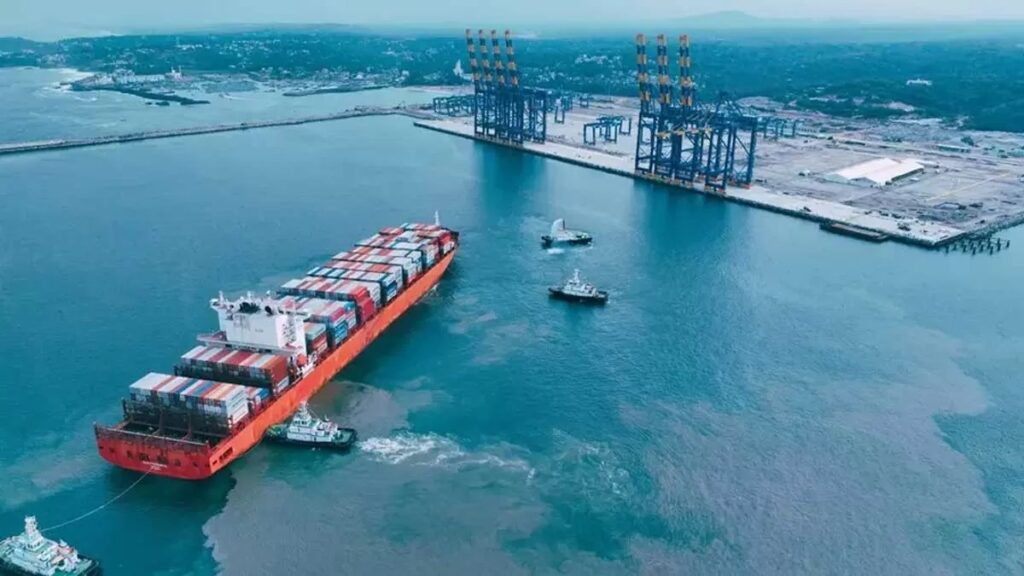May 2, 2025, will be remembered as a landmark in India’s maritime history. On this day, Vizhinjam International Seaport in Kerala was officially commissioned, becoming the country’s first semi-automated deep-sea transshipment port.
Natural Depth Gives Vizhinjam a Strategic Advantage
Unlike other Indian ports that require dredging, Vizhinjam has a natural depth of 20 meters. This allows the world’s largest cargo ships to dock directly. The port is located just 10 nautical miles from a major international shipping lane, making it an ideal stopover with minimal deviation.
Faster Turnaround with Automation
Vizhinjam is equipped with automated cranes that can quickly transfer containers from ships to trucks with minimal human involvement. This reduces turnaround time for ships and lowers operational costs, benefiting global shipping companies.

Trial Phase Already Shows Strong Performance
Trial operations began in July 2024. Since then, 277 cargo ships, including some of the world’s largest like MSC Turkiye, have called at the port. In the trial period alone, the port handled over 600,000 TEUs, exceeding expectations.
Major Employment and Business Potential
Once fully operational, Vizhinjam is expected to generate direct employment for 4,500 people and create 20,000 related jobs. Logistics hubs, manufacturing clusters, and special economic zones are planned around the port, boosting entrepreneurship and regional growth.
Boost to India’s Maritime Capabilities
Until now, India relied heavily on Colombo, Singapore, and Dubai ports for transshipment. Vizhinjam fills a major infrastructure gap and gives India a competitive edge in global shipping.
Strategic Importance in the Southern Region
Given its advanced infrastructure and southern location, Vizhinjam is also viewed as a strategic asset by India’s defense planners, especially in the evolving geopolitical context.
Massive Investment and Future Expansion
The total investment for Vizhinjam is projected at ₹20,000 crore. When fully completed by 2028, it will handle 3 million TEUs. Adani Ports has already announced ₹10,000 crore for the next phase, requiring 77 more hectares of land.
Timeline of Key Milestones
- June 10, 2015: Cabinet approval for the project
- August 17, 2015: Concession agreement signed between Kerala govt and Adani Ports
- June 2023: Government revises deadline for completion
- July 13, 2024: Trial cargo movement begins
- December 3, 2024: Commercial operations commence
- April 9, 2025: VGF agreement finalized
- May 2, 2025: Port formally commissioned by the Prime Minister
